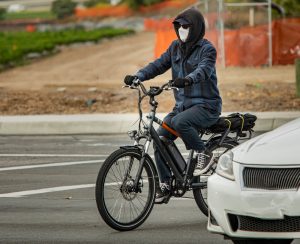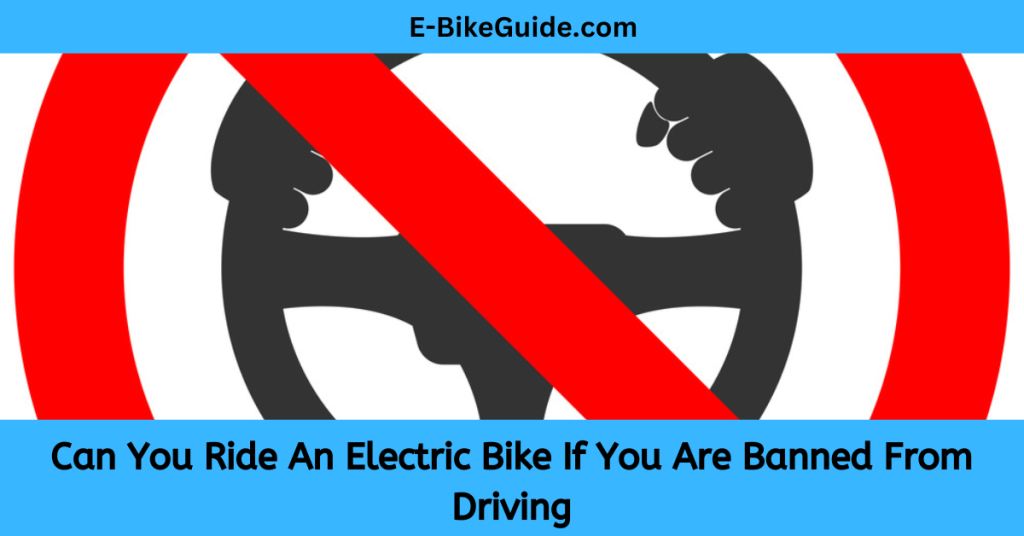Most people’s eyes are on electric vehicles, especially electric bikes for personal transportation. Because e-bikes are trendy and super handy when it comes to handling or parking. If you have an e-bike there will be no chance you’re trapped in traffic, the time and money for looking after the vehicles will be cut down and e-bikes are not complicated as your car. This is almost true, you can confirm this by looking at the number of units being sold every year. According to a survey from Deloitte, around 30% of electric bike buyers buy their electric ones only to replace their cars, not as an upgrade to their existing petrol bikes. It’s almost increasing over time. So, the buzz is legit, but do you think an e-bike can replace cars?

Since the transportation system is evolving, manufacturers have already started considering the changes customers expect. Many peoples from urban cities gradually replacing their mode of personal transportation from cars with electric bikes. This all comes from the gasoline price increases, health concerns, improvements in EV technology, and the advancement of the Li-ion battery technologies like battery size keeps shrinking and the capacity is increasing. And we can conclude, whether it will replace cars or not when we look at the reasons why people are choosing electric vehicles rather than gasoline vehicles.
Above all this, there is also another gateway there only because of e-bikes. That is, your license or your right to travel document may be suspended and if you need to travel somewhere urgent, that’s where e-bikes will help you. Some news articles also covered a few years ago, like banned drivers’ eyes are on electric bikes. Since they don’t go high speeds and have many law exemptions, you can use your e-bikes anytime, anywhere, and under any conditions. Driving Under the Influence or DUI is a crime, it’s not advisable. But, still, you can ride an e-bike after a party. So, let’s take a look at this aspect in this article.
Law variations across the states

You normally can’t bike in the states mentioned above. Compared to other powered vehicles like electric or normal scooters and gasoline mopeds, electric bikes have this unique advantage. By the type of fuel or by the cause of how they operate, they all have distinct laws as follows.
Idaho state has a law that motorcycles and mopeds should not be fell under the e-bike category. According to a particular statute that exempts owners from the registration and license requirements. You can ride on your electric bike in bike lanes or greenways in Arizona, Utah, and Washington. Local governments in Wyoming have the authority to impose a registration charge on both electric and non-electric bicycles. You can ride your e-bike in relevant bike lanes or greenways in Arizona, Utah, and even Washington. In addition to this, all states are expecting you to follow the basic rules of a vehicle, your electric bicycle must display a label with the classification number, motor power, and top-assisted speed information in all of the states mentioned above.
Testing out rental e-scooters in the UK
In the places of UK, rental e-scooters are having this special permission to hold trials. Anyone using a rented e-bike on a public road or other area is required to follow all applicable traffic laws or otherwise will get a penalty for that.
For an e-scooter rental, you need to follow these guidelines

- possess the appropriate driving license (category Q or P/M) and be at least 16 years old. ● Open a profile with the rental agency.
Also, keep in mind that, in the UK only authorized places may be utilized for e-scooters. Riding an e-bike legally
With the owner’s consent or approval by letter format, using an e-scooter on private property or permitted places like private roads are acceptable. Even though you are trialing on the public road or cycle lanes or even on the greenways, Your trial will no longer be questioned if you have proper permissions and letters of approval or proper documentation from rental providers. So then it’s all up to you. Be careful with the road rules and traffic rules. We will also have a look at penalties.
Offenses and penalties according to the UK

You might receive a Fixed Penalty notice if you don’t have a license, or the right license, or are riding without insurance. Having no insurance carries a £300 fine and six points on your license while riding without the proper license carries a £100 fine and three to six points.
If you’ve discovered that you are not obeying the road rule by using a cell phone or other portable entertainment device while riding on roads might result in a Fixed Penalty Notice and around £50 fine. So don’t do that. Also, cycling on a sidewalk can drag you to a fine of £200. And six points for running at red lights. Driving under the influence is a serious offense. That will drag you into a fine of around £200. With a fixed-penalty notice, and potential penalty points of around 5 or 7.
Drinking while driving has the same penalties. As when a person is operating a motor vehicle, including possible jail time, fines, and driving prohibitions. If you use your e-bike in a disruptive manner in public, you will probably get impounded under section 59 of the Police Reform Act if
you use it in a disruptive manner in public. We would always advise wearing safety gear. uch as a helmet, and adhering to the official speed limit when using an e-scooter.
Can you ride an e-bike, even if you’re banned from driving/don’t have a license?

We can’t answer this question straight, because every jurisdiction has different laws and practices regarding electric vehicles. We can’t assure you that the regulations concerning an e-bike are universal. For example, California, Alaska, and many other states allow people to ride an e-bike even if they have lost their driving privileges. However, not every country has followed this same way. You have to get familiar with the laws and news updates to get to know about all these things. Apart from the reason for the suspension like DUI or caused an accident or any other reasons, let’s have a look at the variety of options for people who lost their driving privileges.
-
Other options for traveling
When you are speaking about alternate options either it will be public transport or a hire option. In public transportation, you will likely have plenty of options starting from buses, trains, and flights. When speaking about hiring, there will be options like taxis, uber rides, hiring a private driver, or even renting an e-bike.
These all options have also some kind of difficulties with them. For example, public transport doesn’t cover most of the states. Taxis likely cost you higher. Renting Options couldn’t work if you’re traveling for a long day or if it is a one-way journey. And, these rental options won’t work for everyone.
Apart from other options, if you badly need an e-bike option, you have to learn about rules and regulations. The standard rule in states is, e-bikes are not allowed to go beyond 20-30 miles per hour. You should need a license if you can go beyond the limit above mentioned. This is the confusion lying there because of the lack of clarity in classifying electric bikes. They will fall under both the motorized scooter and the electric bicycle category easily. So depending on the location where you are riding or living, it may vary.
For most e-bikes have a motor-rated maximum power of 250 watts and a maximum speed of 20Kmph. It will automatically come under the Electrically Assisted Pedal Cycle (EPAC) category. They won’t require usual documentation like insurance, tax, helmets, and registration. You can ride EPACs on both cycle lanes and roads but can’t on pavements. In Canada, the same law will be applied but, a little differently. Their maximum limits are 32Kmph and the motor power of 500watts.
In some countries, electric bikes without rear red lights, number plates, signaling ability, and lamps are banned from riding on the roads. They can become a threat to other vehicles. Cycle helmets are also recommended for riding, but not legally required. However, legalizing and regulating the usage of electric bikes would result in faster ridings than public transport and the cost-effective. Also, help peoples from poor backgrounds to cut down the costs of insurance, license, taxes, and maintenance. Now we’ll list down them one by one.
-
Age limit on e-bikes
Remember that the common age limit for riding an electric bike is 12 years. It may vary as we mentioned earlier. Also, rental companies have different policies. Keep in mind that the choice of giving your children an e-bike is all up to you at the end of the day. You have to take care of their speed concerns and their maturity levels to assume how will they be responsible when they are on the road.
-
Driving Under the Influence (DUI)
It’s always illegal to ride if you are under the influence of alcohol or drugs. Driving while intoxicated is a phrase that frequently relates to drinking but also drugs. If you get a DUI, your license will suspend and you might go to jail. Even if it is out of character for you, driving while intoxicated is risky, and you should receive a license suspension for it.
You may take steps to lessen the annoyance, though.
-
Helmets and other safety equipment
Similar to bicycles, bike helmet use and prior riding training with road rules are suggested but not required for safety reasons. E-bikes are deemed mainly the same as bicycles under the legal system of many countries. This makes sense because they are just regular bikes with the exception that the pedal force is increased to a certain extent because of having a battery. Anyway, under the age of 16, children are advised to wear a helmet when they are riding. We recommend everyone wear a helmet. We all live in an unpredictable world. Anything could happen at any time.
-
On-road traffic rules
You can ride electric bikes on the road lanes. There are no legal laws that can stop you from riding an e-bike on a road together with other vehicles. You only need to follow the same traffic rules. It can apply to you also. The important one is, giving way to other vehicles from the right, stopping at red lights, signaling with the tail lamps at turns, observing the speed limit boards, and giving way to pedestrians at pedestrian crossings. Keep in mind that when you are riding an electric bike, you are more likely exposed to accidents. Since there are no safety measurements in a cycle.
Electric bike riders can also ride on the pedestrian and cycle lanes on the roads. Pedestrians can use any side of the lane like left or right. But, as a responsible rider, you have to ride on the right side always. Also, you have to take care and pay attention to the movement of pedestrians when you are riding in these lanes. However public transport lanes are separate lanes in some cities. You can also ride those electric bikes there. But, always make sure about the blind spots of the public buses.
You can also consider riding on pavements and pedestrian paths, only if you don’t disturb the crowd. Always make sure, you are maintaining a distance from the person you are passing on. All vehicle drivers, including bikes, cars, and other heavy vehicles, are subject to the one-way rule on streets. On certain streets, however, the sign could also feature a signboard indicating that cycling is allowed in both directions.
For electric bikes, this extra signboard is also applicable. In such places, it is especially important to exercise caution if you are riding in the opposite direction to the flow of traffic because many drivers are unprepared for approaching drivers. The “No entry” sign at the end of the road where entry is restricted and the “One-way traffic” sign at the end where entry is
allowed is typically used to indicate a one-way regulation. The “sykkel unstated” (“Cycles exempted”) sign will be present if bicycles and electric scooters are to be excluded. The one-way rule does not apply to riders who are riding on the pavement most of the time in most places.
-
Giving way
You can ride an electric bike anytime anywhere where you can ride a normal bicycle. But, you have to practice this giving way method to avoid traffic and chaos. It also depends on the road you are riding. You don’t need to care about this when you are on the pavement or one way. When you are obligated to give way, you must stop or move over until all vehicles that are crossing your path have done so.
The safest move is to slow down or stop entirely if you are unsure of whether you must yield. Either in the cycling lane or on the road. You must follow the laws that are in place for automobiles. Whether you are riding on the sidewalk or in a bike lane. When entering a priority road, give way to all other vehicles approaching from your right side (right-hand rule) (there will be a give-way sign)
Conclusion
An electric bike rider’s life might be challenging at times due to every state’s disparate laws and regulations and lack of standardization. What is permitted in one place could be prohibited in another place. Our best piece of advice is to confirm the laws before you ride. Road rules will frequently change according to the time.
To avoid legal issues, it’s the best advice to start by understanding the motor power, speed restriction, e-bike classification, age requirement, and helmet requirement. This will give you a basic understanding of legalization criteria. Local governments are working hard to include e-bikes in-laws. Because that market is already in the growing stage and people are likely to shift to electric bikes from cars. Although uniformity would be wonderful, as I’ve already indicated, having fifty independent states would always be problematic because they all have unique traffic laws and categorization schemes. Do your research and enjoy your e-bike to maintain everything legally. Happy riding!

